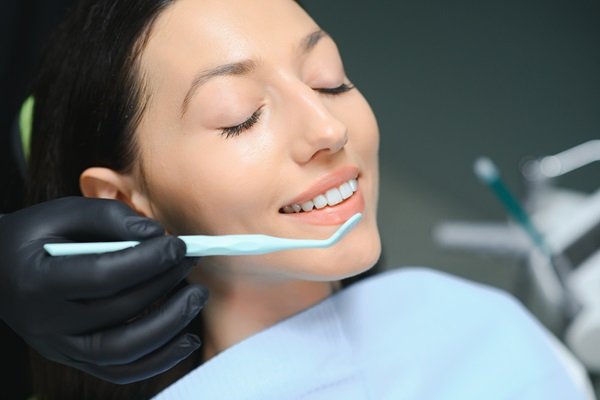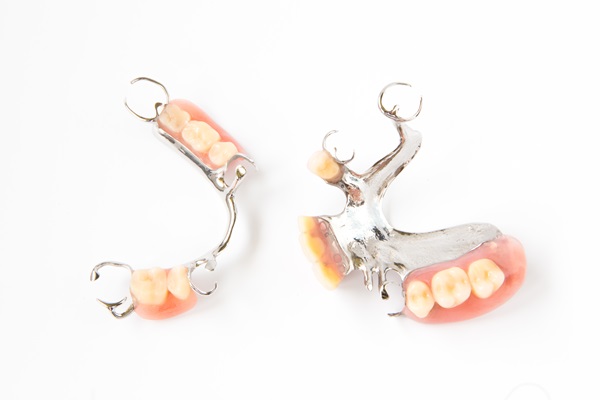 Dental veneers are used to treat a variety of issues, including damaged, misshapen, or misaligned teeth. While they can let patients enjoy an attractive, natural-looking smile, these tooth coverings may show signs of aging and staining without adequate care. Taking steps to prevent unnecessary stains helps keep veneers looking bright and beautiful.
Dental veneers are used to treat a variety of issues, including damaged, misshapen, or misaligned teeth. While they can let patients enjoy an attractive, natural-looking smile, these tooth coverings may show signs of aging and staining without adequate care. Taking steps to prevent unnecessary stains helps keep veneers looking bright and beautiful.
Practice proper dental care
The most important step in stain prevention for veneers is maintaining a healthy dental hygiene routine. Patients with this type of treatment can benefit from increasing the frequency of tooth brushing and seeing a dentist on a regular basis.
Brushing and flossing daily
A minimum of twice-daily brushing is necessary to keep teeth, gums, and veneers clean and healthy. Removing leftover food particles helps prevent staining. Most toothpastes are safe to use on veneers, but many dentists recommend avoiding whitening toothpastes. These products, which often contain abrasive ingredients, can cause irreversible damage to some porcelain surfaces, making stains worse.
Flossing is another important step in routine care for veneers. This can reduce staining between teeth while preventing an overgrowth of bacteria along the gum line. Dental professionals recommend a minimum of flossing once a day for better oral health and a cleaner smile.
Rinsing with care
Unless recommended by a dentist, daily use of a mouthwash is not a requirement for good oral hygiene. Still, many patients enjoy the benefits of fresher breath, healthier gums, and a brighter smile gained by adding mouthwash to a dental care routine. However, over time, the alcohols present in many of these products can weaken the bonding agent used to apply veneers. To be safe, patients should opt for an alcohol-free option.
Maintaining dental appointments
Routine dental cleanings help remove the plaque buildup that gives teeth and veneers a yellowed appearance. Patients should strive to maintain regular six-month appointments and avoid a lapse between visits. When at the office for a regular checkup, patients can also discuss whitening options if stains or signs of aging start to appear. Depending on the type of material used, there may be solutions to gently reduce the appearance of stains without damaging the veneers themselves.
Avoid problem foods and beverages
Certain dietary choices can leave stains behind on both veneers and natural teeth. However, because traditional tooth-whitening treatments are not an option for veneers, some items should be avoided altogether. These include:
- Tea, coffee, and dark-colored sodas
- Red wine
- Beets
- Berries
- Tomato sauces
- Balsamic vinegar
- Soy sauce
- Items with artificial food dyes
Patients with veneers who choose to consume these foods or beverages, even in moderation, should rinse and brush immediately after. In addition, tobacco products should be avoided, as the ingredients lead to unsightly staining along with serious health problems.
Conclusion
Just as with natural teeth, staining can be an issue with veneers. Many at-home and professional whitening treatments cannot be used on veneers. However, patients who are proactive about home care and lifestyle choices can help prevent or reduce staining for a whiter, more beautiful smile.
Request an appointment or call San Dimas Family and Sedation Dentistry at 909-305-2300 for an appointment in our San Dimas office.
Recent Posts
Patients interested in cosmetic dental treatment may consider a smile makeover. During this procedure, a dentist transforms a patient's smile using restorations. People who want to improve certain aspects of their smiles, such as misshapen teeth, slightly crooked teeth, chipped teeth, discolored teeth, and gaps in between their teeth, may want to consider veneers. These…
Veneers are an excellent option for individuals seeking a permanent treatment that makes their teeth more attractive. A smile is often one of the first features noticed about a person; unfortunately, many dental issues can dim that happy look. Teeth may become stained from eating and drinking various types of food and drink over time.…
Dental veneers, ceramic or composite shells that fit over teeth to restore damage or make cosmetic corrections, are a long-lasting, durable treatment, but do eventually need to be replaced. This guide covers some of the questions patients often have about replacing this dental work.Not every set of veneers lasts the same amount of time, but…


